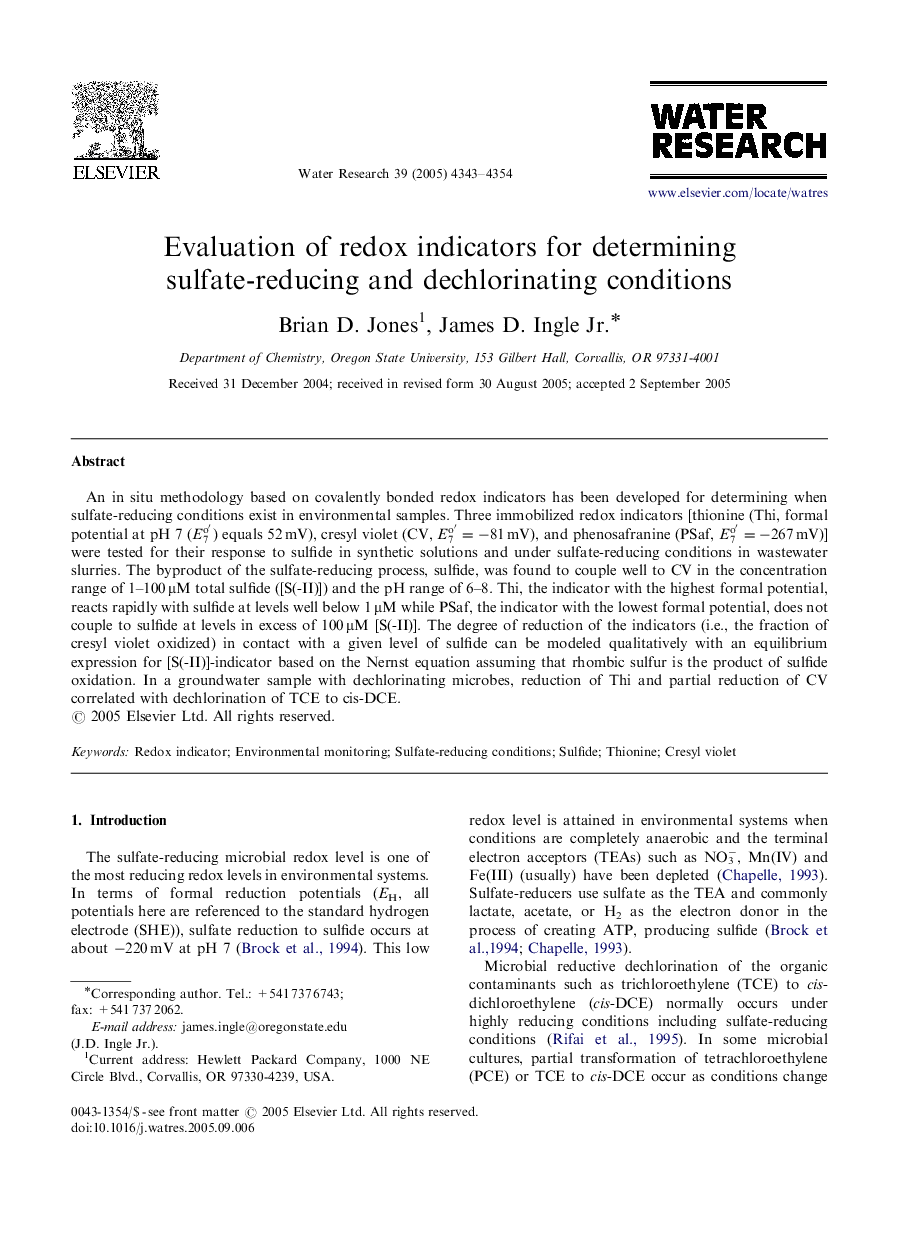| Article ID | Journal | Published Year | Pages | File Type |
|---|---|---|---|---|
| 4486706 | Water Research | 2005 | 12 Pages |
An in situ methodology based on covalently bonded redox indicators has been developed for determining when sulfate-reducing conditions exist in environmental samples. Three immobilized redox indicators [thionine (Thi, formal potential at pH 7 (E7o′) equals 52 mV), cresyl violet (CV, E7o′=−81 mV), and phenosafranine (PSaf, E7o′=−267 mV)] were tested for their response to sulfide in synthetic solutions and under sulfate-reducing conditions in wastewater slurries. The byproduct of the sulfate-reducing process, sulfide, was found to couple well to CV in the concentration range of 1–100 μM total sulfide ([S(-II)]) and the pH range of 6–8. Thi, the indicator with the highest formal potential, reacts rapidly with sulfide at levels well below 1 μM while PSaf, the indicator with the lowest formal potential, does not couple to sulfide at levels in excess of 100 μM [S(-II)]. The degree of reduction of the indicators (i.e., the fraction of cresyl violet oxidized) in contact with a given level of sulfide can be modeled qualitatively with an equilibrium expression for [S(-II)]-indicator based on the Nernst equation assuming that rhombic sulfur is the product of sulfide oxidation. In a groundwater sample with dechlorinating microbes, reduction of Thi and partial reduction of CV correlated with dechlorination of TCE to cis-DCE.
